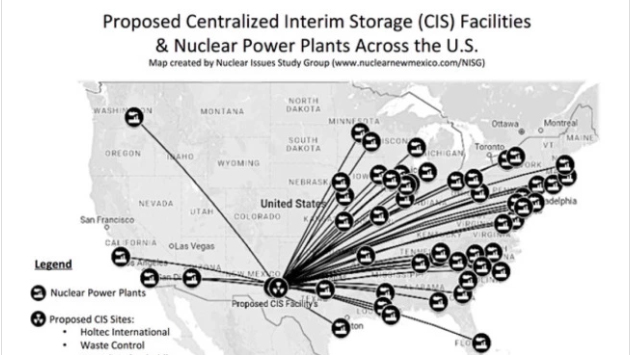The Environmental Injustice of High-level Nuclear Waste in the US
2018
Currently, within the United States of America there is over 80,000 metric tons of high-level nuclear waste, which is considered some of the most dangerous waste on the planet because it remains highly radioactive for hundreds of thousands of years.

By- Cody Slama
Currently, within the United States of America there is over 80,000 metric tons of high-level nuclear waste, which is considered some of the most dangerous waste on the planet because it remains highly radioactive for hundreds of thousands of years. The federal government seeks to consolidate all of this waste into either a permanent repository or a centralized interim storage facility. The current proposals to store HLNW, in a permanent repository at Yucca Mountain in Nevada or in centralized interim storage facility’s in New Mexico and on its border in Texas, is an environmental injustice as both of these storage sites disproportionately impact primary people of color and those living below the poverty line. In addition, all three of these facilities, where the federal government is planning on storing all of the Nations HLNW, lack local support and consent from the targeted community’s. Yucca Mountain has been constructed, but faced enough public opposition to make it un-operational. The other two facilities, being built by private corporations, are currently going through a licensing process with the Nuclear Regulatory Commission, that would allow them to be constructed. If any one of these facilities began accepting waste, it would set into motion the unsafe transport of HLNW throughout the country putting the entire nation at risk, but more so, in the places where this waste will be stored for an indefinite amount of time. This nuclear waste has the potential to absolutely devastate the land, air, water, and peoples health. It is essential that the Federal Government move away from their current proposed solutions, that carry the weight of being environmental injustices, to alternative solutions that have public support and consent.
